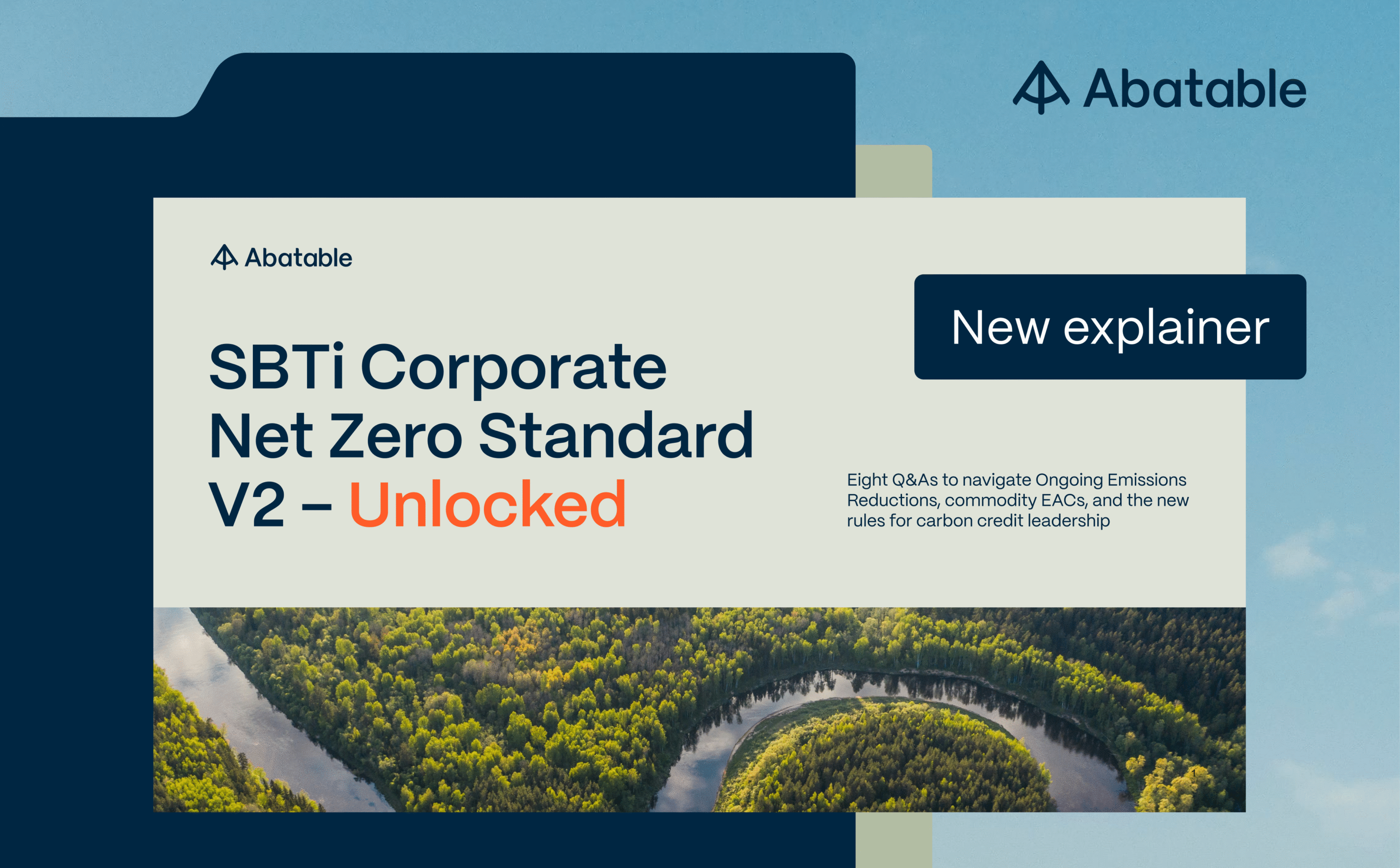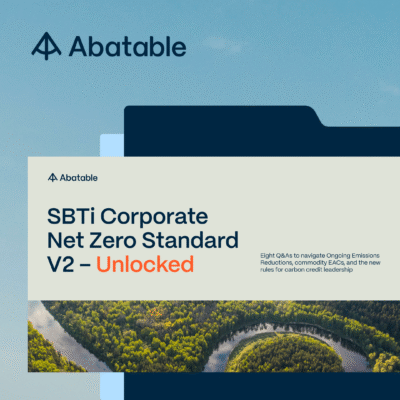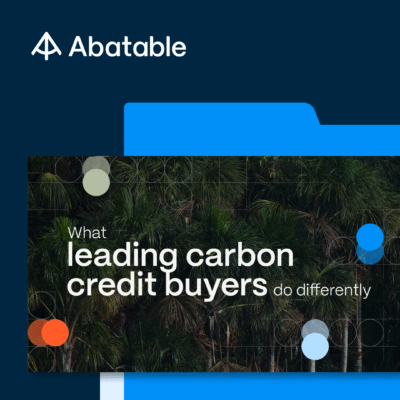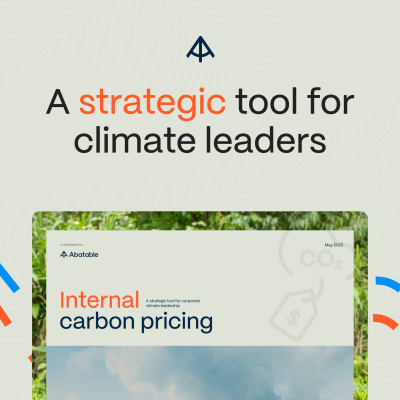The Science Based Targets initiative (SBTi) has released the latest draft of its updated Corporate Net Zero Standard (CNZS) V2 for public consultation, a significant development for corporate climate action.
This comprehensive new draft retains scientific integrity while improving clarity and usability. It also formalises the use of carbon credits through a new ‘Ongoing Emissions Responsibility (OER)’ framework, requiring companies to purchase credits for ongoing emissions from 2035 onwards. Companies will be recognised for purchasing carbon credits to cover their ongoing emissions before 2035.
The final standard will be published in 2026 and will become mandatory for all companies setting new science-based targets from January 1, 2028. To help businesses navigate the changes, Abatable’s latest explainer, SBTi Corporate Net Zero Standard V2 – Unlocked, breaks down what’s new and what it means for your net-zero strategy.
Why the CNZS V2 update matters
SBTi’s CNZS V2 redefines how companies plan and demonstrate credible decarbonisation.
It provides greater flexibility while maintaining scientific rigour, integrating carbon credits and commodity Environmental Attribute Certificates (EACs) into a more practical pathway for addressing residual and ongoing emissions.
The OER framework encourages earlier additional voluntary action, with companies able to achieve ‘Leadership’ status by covering at least 40% of ongoing emissions using carbon credits before 2035.
Abatable’s Q&A document translates these updates into practical implications for carbon credit strategies, carbon procurement, internal carbon pricing, and alignment with other frameworks such as the Oxford Principles for Offsetting, the Voluntary Carbon Markets Initiative (VCMI), and the Integrity Council for the Voluntary Carbon Market (ICVCM).
What’s inside?
The report answers eight key questions to help you make sense of the updated Corporate Net Zero Standard and its implications for carbon credits and corporate climate strategy:
- What’s new in CNZS V2, and when will the guidance become final?
- What does the CNZS V2 guidance mean for my carbon credit strategy?
- How does CNZS V2 treat Scope 2 and 3 emissions?
- How does Abatable see demand for carbon credits changing under CNZS V2?
- I have used carbon credits for value chain reduction and carbon-neutral goals in the past – can I continue to do so?
- What are commodity EACs, and where can I use them in my Scope 3 goals? How developed are commodity EACs relative to carbon credits?
- How does the new SBTi guidance compare to other carbon credit guidance and integrity frameworks?
- How does CNZS V2 align or conflict with other voluntary and sector-level guidance?
Download the explainer
Get your copy of SBTi Corporate Net Zero Standard V2 – Unlocked by filling in the form below to understand how the new guidance will reshape corporate net-zero strategies, and what your business can do now to stay ahead.
















